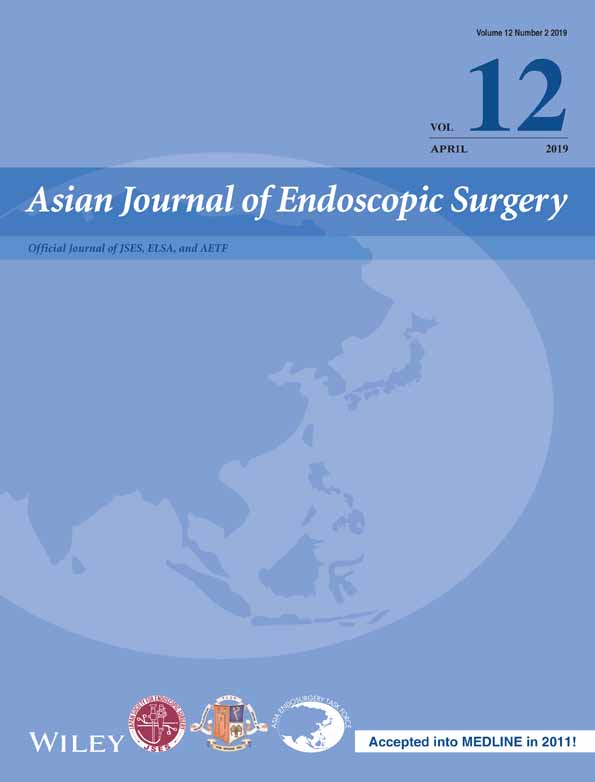Inguinoscrotal hernia containing the urinary bladder successfully repaired using laparoscopic transabdominal preperitoneal repair technique: A case report
Abstract
We report herein a patient with an inguinoscrotal hernia containing the urinary bladder. The hernia was safely repaired using the laparoscopic transabdominal preperitoneal repair technique. A 76-year-old man was admitted to our hospital with abdominal pain, vomiting, and diarrhea. His scrotum was swollen to fist size. Abdominal CT showed herniation of the sigmoid colon and the bladder into the right inguinal region, and his abdominal pain was attributed to incarceration of the sigmoid colon; this was manually reduced. About 1 month later, we performed transabdominal preperitoneal repair. After the direct hernial orifice was identified, the bladder was noted to be sliding from the medial side of the hernia; this was reduced. Peeling on the medial side was carried out to the middle of the abdominal wall, and the myopectineal orifice was covered with mesh. The patient was discharged on postoperative day 1.




